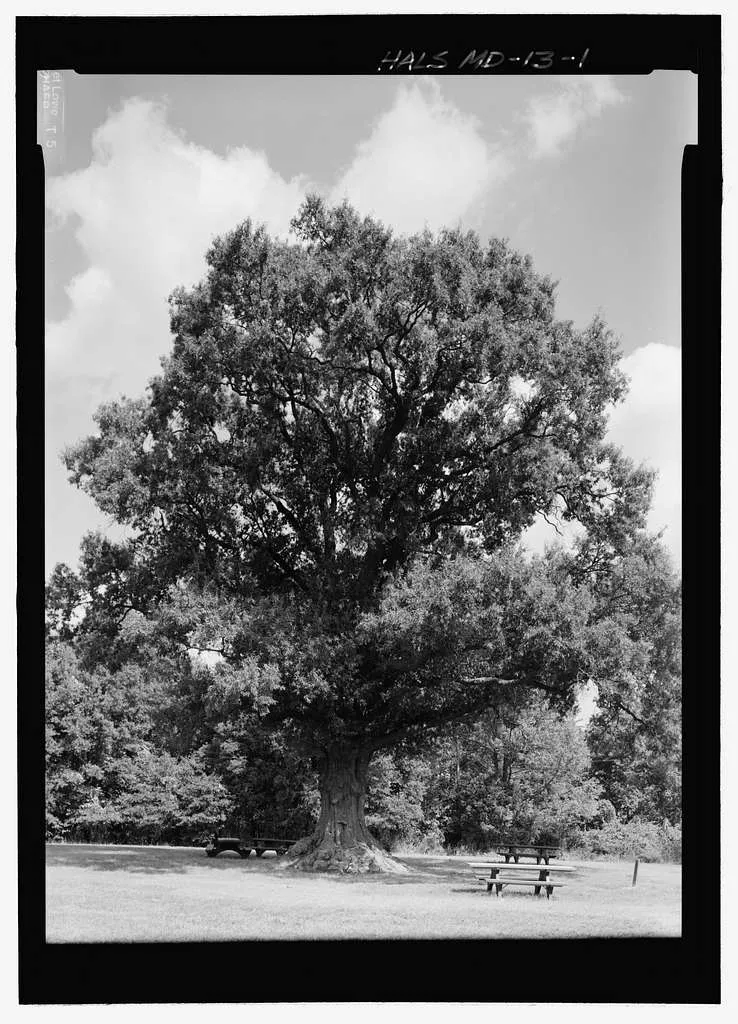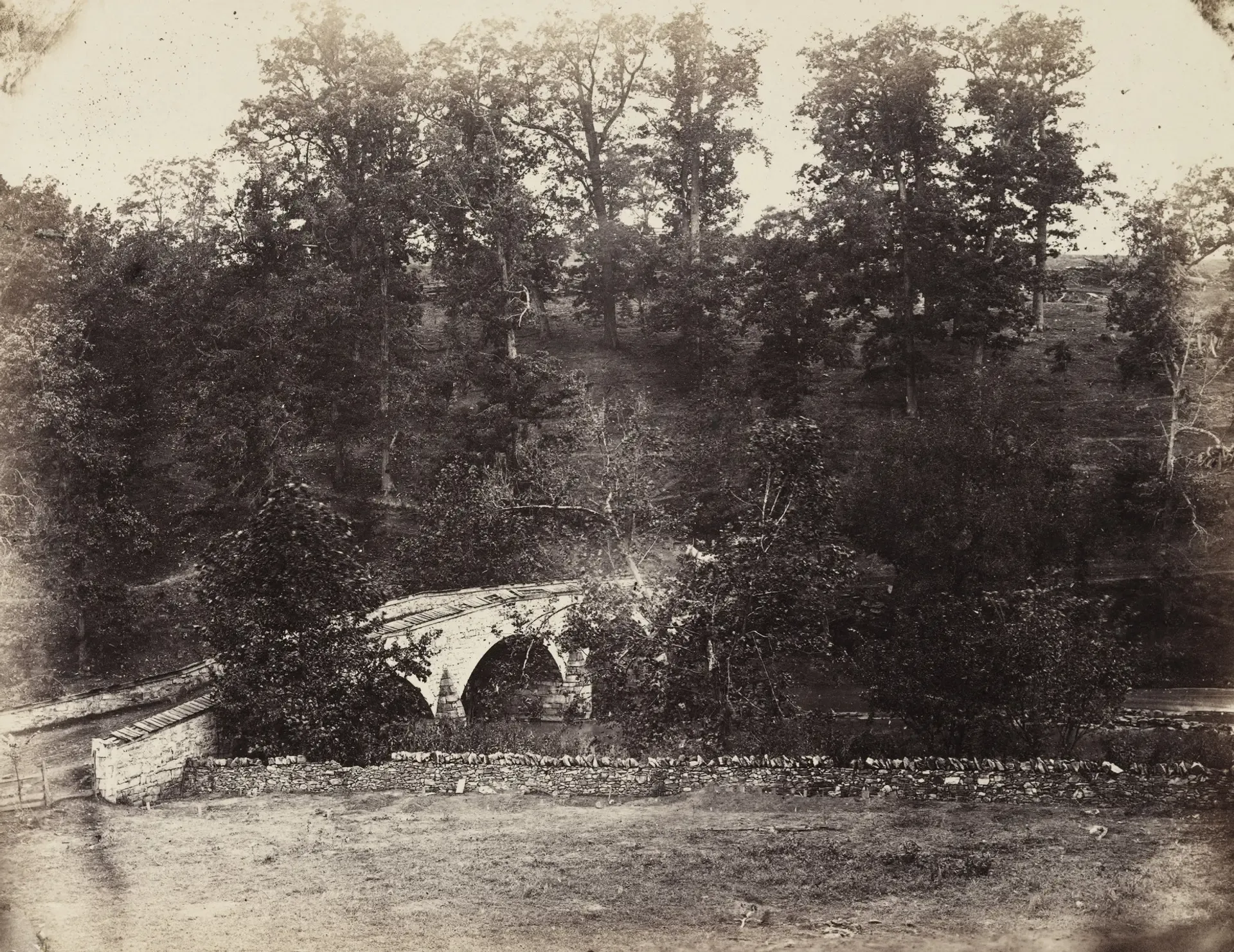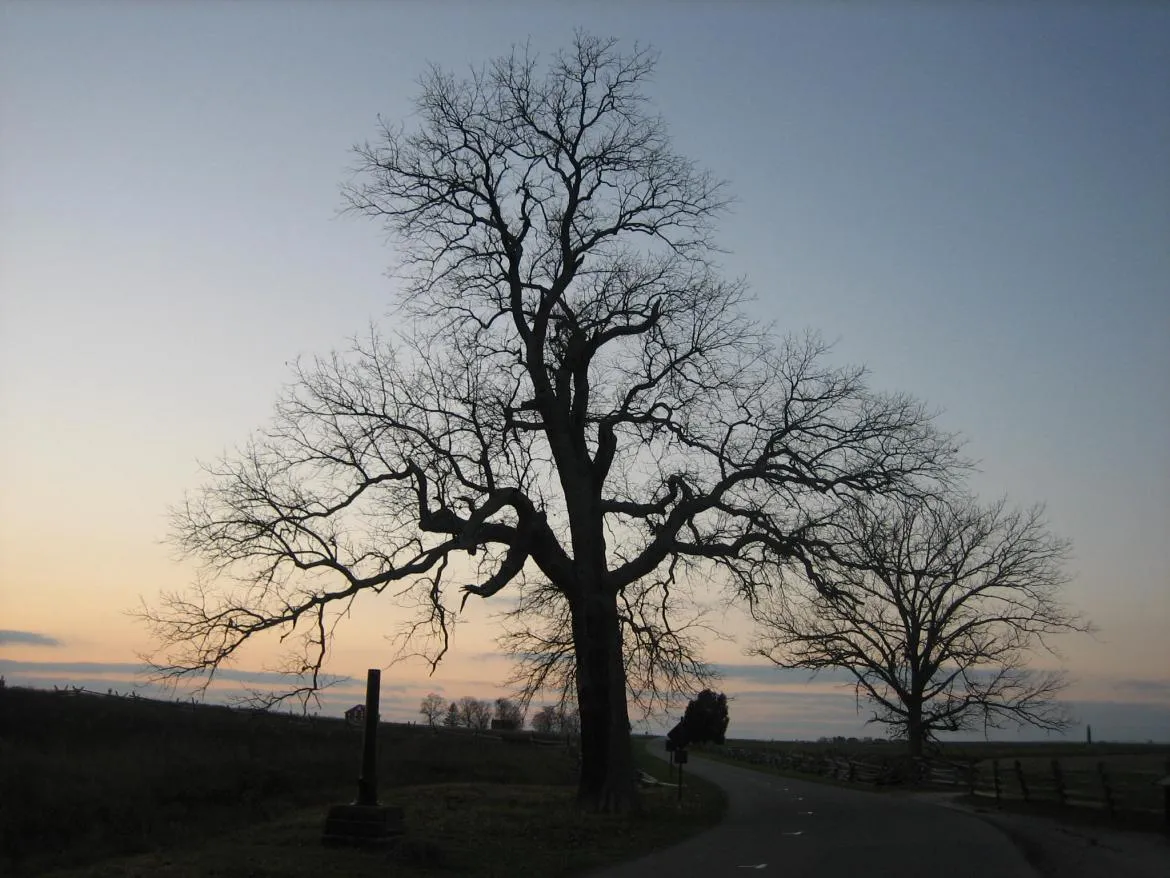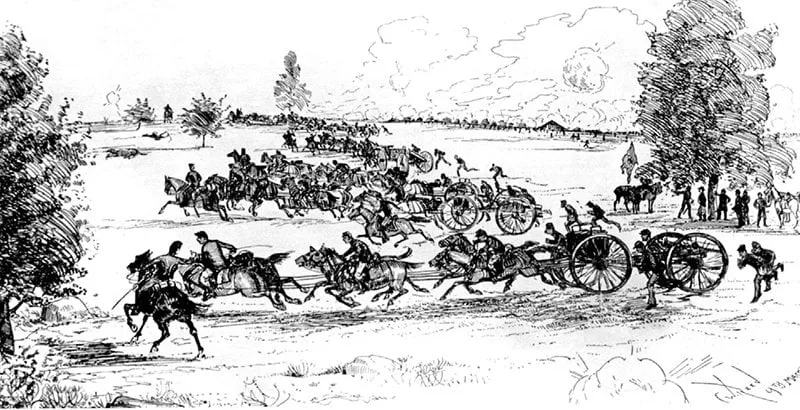Witnessing History from a Tree’s Perspective
On this Memorial Day, the American Forest Foundation remembers the brave service members who died for our freedom, the lands they died upon and the trees that served soldiers in the fight. From our nation’s capital to battlefields around the country, trees have offered both shelter and camouflage while standing as important landmarks which memorialize key events in our history. Over the years, many of these historic trees have been recognized as Witness Trees for their role in American history.
The Witness Tree Protection Program was started in 2006 by the National Park Service following their Historic American Landscapes Survey (HALS). The program identified 24 historically and biologically significant trees across the country and cataloged written and photographic histories of each tree. With their histories archived in the Library of Congress, each tree has become an important, living connection to our past. Paul Dolinsky, Chief of HALS at the National Park Service, said “this will be a lasting record of the story a tree has to tell.”
In this blog post, we’ll explore the history of Witness Trees found in areas where AFF’s Family Forest Carbon Program is operational, including where you can find and visit them.
...One tree, by being deeply wounded, Has been impressed as Witness Tree And made commit to memory My proof of being not unbounded. Thus truth's established and borne out, Though circumstanced with dark and doubt Though by a world of doubt surrounded." ― From A Witness Tree by Robert Frost (1942)
War of 1812 Willow Oak – Maryland:
Located near the parking lot of Oxen Cove Park & Oxon Hill Farm, The War of 1812 Willow Oak (Quercus phellos) stands alone in a grassy Maryland field. The historic land where the tree has planted roots affords a beautiful view of the nation’s capital in Washington D.C. On the night of August 24, 1814, the willow tree witnessed the Battle of Bladensburg. That night, British troops defeated American forces and afterwards, marched on the Capital to set fire to the White House and other parts of the city. During the evening, the sky was “illuminated by the fires in our Capital.” The War of 1812 Willow Oak, now believed to be at least 200 years old, still stands, an earthly reminder of the battle.

To visit this tree:
Follow the directions to get to Oxen Cove Park at Bald Eagle Road, Oxon Hill, MD 20745. The tree is located along Oxen Hill Farm Rd. and is surrounded by picnic tables.
The Burnside Sycamore – Maryland:

We know The Burnside Sycamore lived through the fighting because of this photograph taken by Alexander Gardner several days later.
War found The Burnside Sycamore (Platanus occidentalis) on September 17, 1862. Growing on the now commemorated Antietam National Battlefield, this sycamore laid roots on the edge of Burnside’s Bridge. When Union troops moved to cross the bridge, they were faced with dug-in Confederate troops and Confederate reinforcements later in the day. After more than five hours of fighting and over 22,720 casualties, the bloodiest day of American history ended with the Union taking the bridge. Amidst the crossfire, The Burnside Sycamore, then a young sapling, survived the onslaught and still grows today. The tree has been challenged over the years by flooding from the creek and the bridge limiting its root growth, yet it’s still growing strong. Joe Calzarette, Natural Resources Program Manager at Antietam National Battlefield, says that when people see this tree “they think, ‘Boy, if this tree could talk.’”
To visit this tree:
Follow directions to get to Antietam National Battlefield at 5831 Dunker Church Road, Sharpsburg, MD 21782. The Burnside Sycamore grows alongside the parking lot at the end of Old Burnside Bridge Rd.
The Sickles Oak – Pennsylvania:

There are several Witness Trees that survived the Civil War and overlook Gettysburg National Military Park today. Most reputable and accessible of them all is The Sickles Oak, a swamp white oak (Quercus bicolor) on the grounds of Trostle Farm. The tree provides shade on a wide-open field, and Charles Reed sketched the tree on the afternoon of July 2, 1863, when Major General Daniel E. Sickles took to this rare shade to plan his next move during the Battle of Gettysburg. Later that day, Sickles would march his men into a perilous position where his Corps would take many losses and Sickles himself would lose his right leg to a cannonball. The “big, beautiful, healthy-looking tree,” as described by Katie Lawhon, Gettysburg National Military Park spokesperson, was 75 years old at the time of the Civil War. Still alive today, the now-200-year-old oak overlooks the national military park and its nearly one million annual visitors.

Charles Reed sketched the tree on the afternoon of July 2, 1863, when Major General Daniel E. Sickles took to this rare shade to plan his next move during the Battle of Gettysburg.
To visit this tree:
Follow the directions to get to the Gettysburg National Military Park (Visitor Center is located at 1195 Baltimore Pike, Gettysburg, PA 17325). The Sickles Oak is found near Trostle Farm at stop 11 on the Gettysburg auto tour, south of Gettysburg on the north side of United States Avenue.
Witness Trees are some of the last survivors of the rich historical milestones that have defined our country. Through their survival, we are reminded of the brave souls who have sacrificed everything for the future security of this nation. Mike Townsend, a Park Ranger with the National Park Service, shares that “Witness Trees stand as silent sentinels of storied landscapes and help connect people, history, and places. They… remain part of our nation's cultural legacy.”
The American Forest Foundation is proud to protect the wellbeing of forests, the trees in them, and the stories that come from them, for the long term. These American ecosystems hold power not only from the carbon sequestered in their branches, but also from the history in their roots.